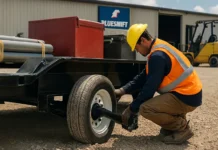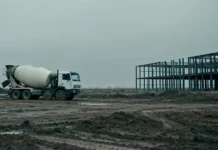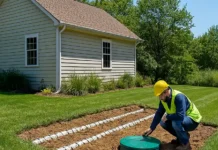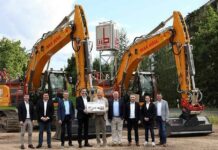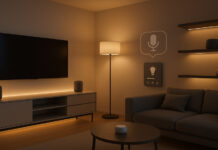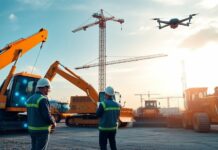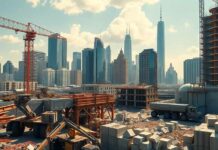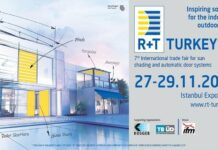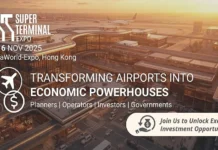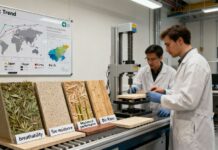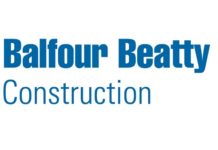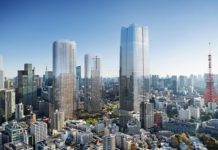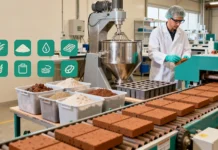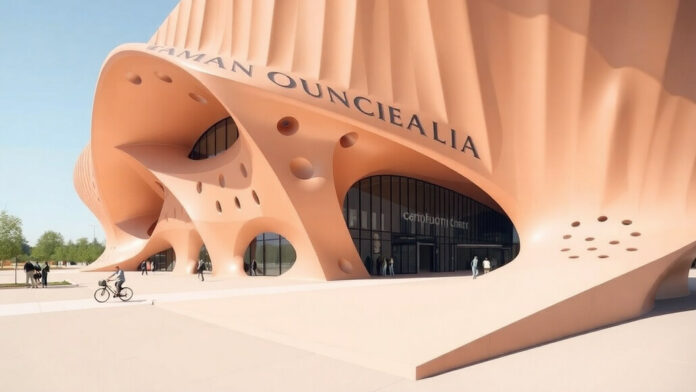From Sketch to Structure: The Role of Parametric Design in Composite Architecture
The combination of parametric design with composite materials is one of the most important steps forward in the history of building innovation. Architects and builders can now try out shapes that were thought to be impractical or impossible before parametric design came along. When mixed with cutting-edge composites like Glass Fibre Reinforced Polymer (GFRP), this mix of smart design and adaptable materials is changing the limits of what is possible in modern building.
This article goes into detail about how parametric design can help move ideas from being just ideas to real structures, mainly in the area of composite building. We look at project processes, how materials behave, digital fabrication, performance outcomes, and more in-depth historical and technical contexts to show why this approach is quickly becoming essential in the architectural field.
Historical Evolution of Parametric Design in Architecture
The idea behind parametric design can be tracked back to the early 1900s, when architects like Antonio Gaudí played around with natural shapes using physical models and gravity. In the 1990s, however, parametric design became available digitally, thanks in large part to tools like AutoCAD and later Rhino and Grasshopper.
In the early 2000s, companies like Foster + Partners and Zaha Hadid Architects were among the first to use parametric modelling to make structures that were fluid and organic. The big change happened when computers stopped being just a way to draw and started being a creative system that could change based on set limits, like sun angles, wind loads, or the way things fit together in space.
Today, parametricism has grown up and become a strong way of designing things and a strong method. In addition to controlling geometry, it also takes performance, fabrication logic, and cost into account during the planning process.
Understanding Parametric Design in Architecture
Parametric design is not just a tool; it’s also a way of thinking about design that uses algorithms to show how different parts of the design are connected. Instead of making fixed shapes, architects set parameters, or rules and limits, that show how design, function, and performance relate to each other.
A simple parametric model might be able to control how a facade reacts to the direction of the sun, while a complicated one could create completely new shapes based on many environmental and structural factors. This method works well because it is flexible; designers can change the whole system by changing a few input factors.
Why Composites Like GFRP Are Ideal Partners for Parametric Design
Given that they are heavy, stiff, and hard to work with, traditional materials like stone, concrete, and steel often make it hard to express organic and free-form designs. On the other hand, composites like GFRP are strong for their weight, are light, and can be shaped. They work especially well with the complicated shapes that parametric models create.
There are benefits to GFRP that work well with customisable workflows:
- Formability: GFRP can bend in complicated ways, including double curves, which is important for free-form building.
- Precision Manufacturing: It lets you make CNC moulds straight from digital files.
- Speed and Repetition: For modular designs and prefabricated pieces based on parametric systems, speed and repetition are the best features.
These characteristics allow parametric forms to be faithfully translated from digital environments to physical structures.
Technical Deep Dive: Composite Behavior Under Stress
One of the best things about GFRP in parametric design is that it can handle stress in a way that is predictable even in complex geometries. When compared to homogeneous materials like steel, composites behave anisotropically, which means they act in different ways along different directions. With this feature, engineers can find the best fibre orientation by using load paths that they get from parametric structure analysis.
Table 1: Mechanical Performance Metrics of GFRP in Architecture
| Property | GFRP Typical Range | Comparison to Steel |
| Tensile Strength | 500–900 MPa | Similar to mild steel |
| Flexural Modulus | 20–25 GPa | Lower, but more adaptable |
| Weight | ~1.9 g/cm³ | ~3.5x lighter than steel |
| Corrosion Resistance | Excellent | Higher longevity in facades |
| Thermal Conductivity | Very Low | Better insulation |
When GFRP is exposed to wind and earthquake loads, its flexibility and damping properties lower stress concentrations. This makes it safer and more durable for envelope systems in tall and complicated buildings.
Design-to-Production Workflow: A Seamless Pipeline
The process from concept to production is usually smooth in parametric composite architecture. This is made possible by BIM (Building Information Modelling), Rhino/Grasshopper, and digital fabrication tools such as 3D printers and CNC routers. This is how the process works:
Table 2: End-to-End Workflow in Parametric Composite Architecture
| Stage | Tools & Technologies | Outputs |
| Conceptual Design | Rhino + Grasshopper | Parametric models |
| Performance Analysis | Ladybug, Karamba | Climate response, stress data |
| Detail Engineering | BIM + Structural Analysis | Fabrication-ready models |
| Mold Fabrication | CNC / 3D Printing | Composite mold systems |
| Panel Manufacturing | GFRP lamination + curing | Architectural composite panels |
| Installation & Assembly | On-site jigs + Modular Units | Final built form |
This unified workflow cuts down on information loss, prototyping mistakes, and makes sure that the original design concept stays the same from the idea stage to the installation stage.
Sustainability Benefits and Lifecycle Analysis
One of the strongest reasons for parametric composite architecture is that it is environmentally friendly. GFRP panels are not only lighter, which lowers the load on structures and the amount of pollution released during shipping, but they are also long-lasting and don’t rust, so they don’t need to be replaced as often.
A parametric lifecycle study of a GFRP façade system showed that:
- Material efficiency went up by 20–25% because of accurate fabrication
- Up to 35% less waste was made during production.
- Energy required for installation was halved due to prefabrication
Parametric optimisation also helps lower solar gain, boosts daylighting, and incorporates passive cooling, all of which lead to higher building performance scores like LEED and BREEAM.
Case Study: Parametric Façade at Innovation Hub (Middle East, 2024)
Composites.Archi made a tough GFRP wall for a new innovation hub in the Middle East in 2024. The facade had more than 1,200 different panels with different curvatures and densities of holes made using parametric algorithms to model airflow and thermal load patterns.
By using parametric models, the team was able to get 18% more out of the materials they used, cut the time it took to make the structure by 25%, and make it passively cool 45% better than traditional covering systems. Each panel was made using CNC-milled moulds that came straight from Grasshopper outputs. This ensured high accuracy and got rid of the need for changes to be made after fabrication.
Chart 1: Comparative Performance of Traditional vs. Parametric Composite Façade:
| Performance Metric | Traditional Materials | Parametric Composite System |
| Material Waste Reduction | – | 18% |
| Fabrication Time (avg.) | 12 weeks | 9 weeks |
| Passive Cooling Efficiency | Baseline | +45% |
| Weight per sqm | 42 kg/m² | 18 kg/m² |
| Installation Time Reduction | – | 30% |
These figures highlight the compound benefits of combining parametric design with composite technology: design precision, cost optimization, and sustainability.
Digital Fabrication: Closing the Loop
The power of parametric design extends into fabrication through the use of digital tools. CNC machines cut moulds with millimeter-level accuracy; robotic arms place fibre mats on formwork; and laser beams help place panels. When working with the complexity and variability that come with parametric designs, these technologies are especially helpful.
Digital twin models also make it possible to simulate how the structure works, how often it needs to be maintained, and how it reacts to heat before a single mould is made.
This helps mitigate risk and supports informed decision-making throughout the project.
Expert Insights: Bridging Design and Execution
“Parametric design liberates architecture from the constraints of symmetry and repetition, but it’s the flexibility of composites that makes these ideas buildable,” says Dr. Lena Hoffman, Head of Computational Design at ARCHINEXT.
Karan Mehta, Lead Engineer at Composites.Archi, adds, “Our biggest challenge isn’t the software or the composite itself—it’s education. We spend a lot of time working closely with architects to demystify the structural logic of GFRP, and the payoff is worth it.”
Such insights underline the importance of interdisciplinary collaboration and ongoing research in unlocking the full potential of composite-based parametric architecture.
Future Outlook: Parametric + Composite = Mainstream?
The market for architectural composites will continue to grow steadily until 2032. This is because large-scale public and private architecture needs materials that are both light and strong. Parametric design software is expected to become more widely used in the industry as it gets easier to use and cheaper fabrication technologies become available.
But one of the biggest problems still is that architects and material experts don’t always know the same things. Companies like Composites.Archi are leading the way by providing design, engineering, manufacturing, and installation services all in one place. This creates a complete approach to composite building.
Conclusion: The Architecture of Possibility
When advanced composites like GFRP are used with parametric design, they open up new areas of building. It turns the sketchpad into a dynamic design space where imagination and practicality can live together without any problems. Designers are writing new words for buildings that are fluid, flexible, efficient, and most of all, bold. These new words range from expressive art facades to high-performance building skins.
Putting parametric thought and composite technology together isn’t just a trend; it’s the architecture of possibility as we move towards more sustainable and expressive built environments.



